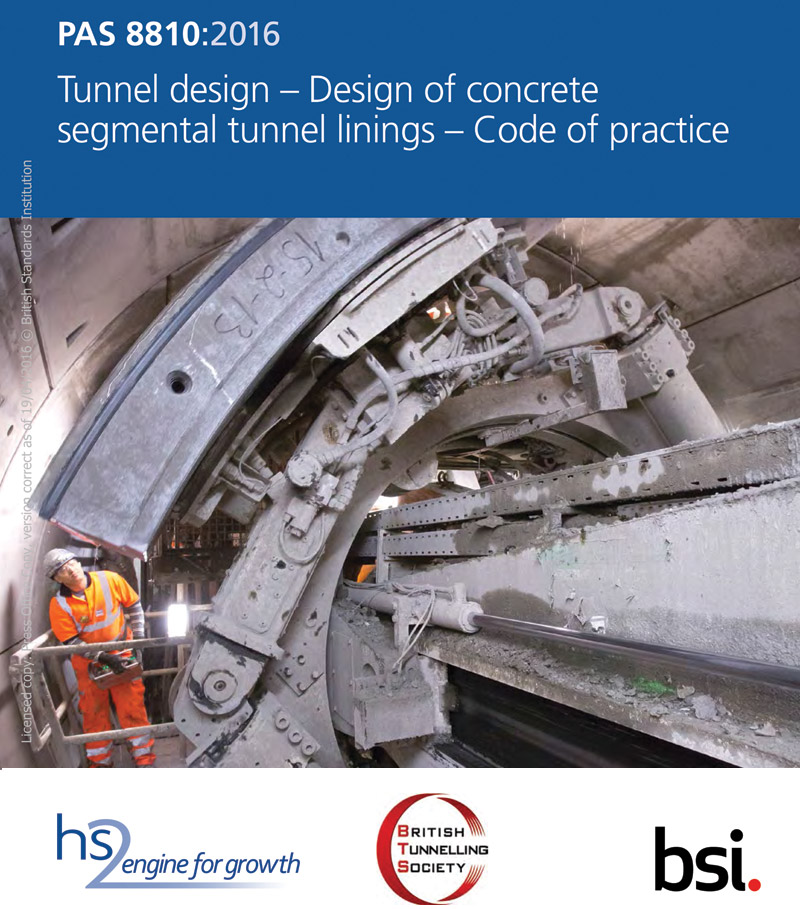Britain launches segmental lining code of practice
20 April 2016GREAT BRITAIN – A specification for the design of concrete segmental linings was launched in mid-April. The document, “Publicly Available Specification (PAS) 8810:2016 – Tunnel Design: Design of concrete segmental linings: Code of practice” was produced by the British Standards Institute (BSI) and lead technical author Arup.
Until now the design of precast concrete segmental linings has been undertaken with reference to a large number of standards and documents. But with the upcoming High Speed Two (HS2) megaproject, it was decided to unify all of this documentation into a single, usable document. Sponsored by HS2 itself (which is spending tens of thousands to hundreds of thousands of GBP on standards) and also the BTS, PAS 8810 should reduce unnecessary administration and streamline the design process.
At a launch event in April, Arup representatives pointed to the growing status of tunnelling as the "go-to method" for solving an infrastructure requirement and said that PAS 8810 represented a "coming of age" for tunnelling, which can no longer be considered a "dark art". The guide represents two years of hard work and an attempt to capture best practice.
On the scope of the document the BSI details the following: "PAS 8810 covers: functional requirements, conceptual design, characterisation of ground, materials design and specification, material characterisation and testing, limit state design, concrete segmental lining design, concrete segment lining modeling, instrumentation and monitoring, and design management.
"This PAS doesn't cover: sprayed concrete lined tunnels, cast-in-situ concrete lined tunnels, any tunnel lining using material other than concrete, such as spheroidal graphite iron or steel, cut and cover tunnels, drill and blast excavations, hard rock tunneling, pipe jacking, project planning and management."
A PAS is not a British Standard. It will be withdrawn upon publication of its content in, or as, a British Standard. The PAS process enables a code of practice to be rapidly developed in order to fulfill an immediate need in industry (in this case, HS2). A PAS can be considered for further development as a British Standard, or constitute part of the UK input into the development of a European or International Standard.
The authors credited the input of the members of the steering group, who contributed an extremely thorough 750 comments on the document between them. The steering group comprised Arup, Atkins, Balfour Beatty, (BTS), CH2M, Costain, Crossrail, Donaldson Associates, Dragados, Health and Safety Executive (HSE), Highways England, High Speed Two (HS2), INECO, London Underground, Mott MacDonald, Network Rail, OTB Concrete, Skanska, Thames Tideway, University College London, Department of Civil Engineering, Morgan Sindall, Vinci, co-opted members.
Originally this guide was intended to include other types of lining, but the scope turned out to be too great. At the time PAS 8810 was published, the intention was to follow up with a sprayed concrete and a cast in-situ document.
PAS 8810 is available for purchase from the BSI website: shop.bsigroup.com

